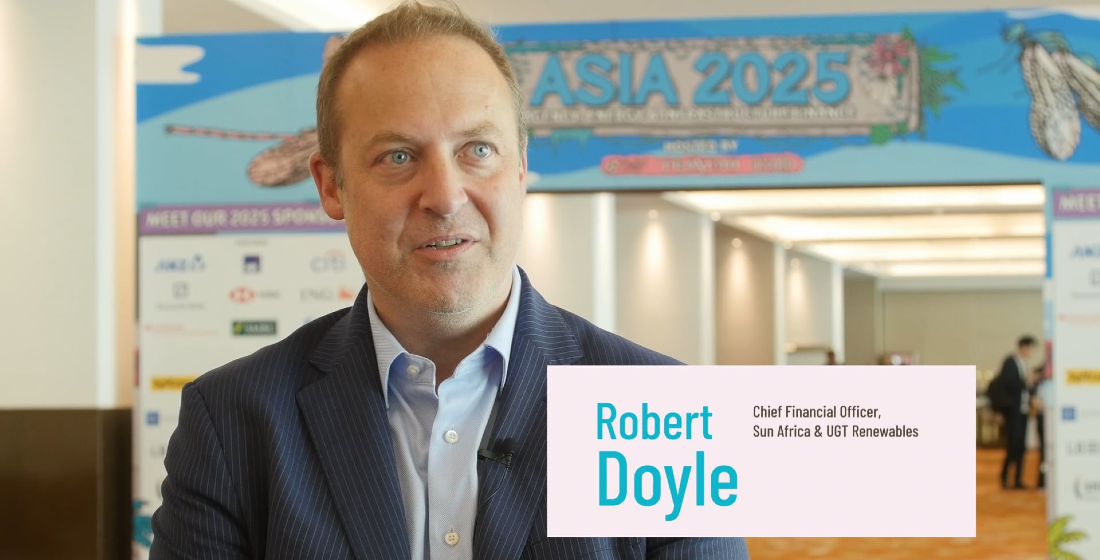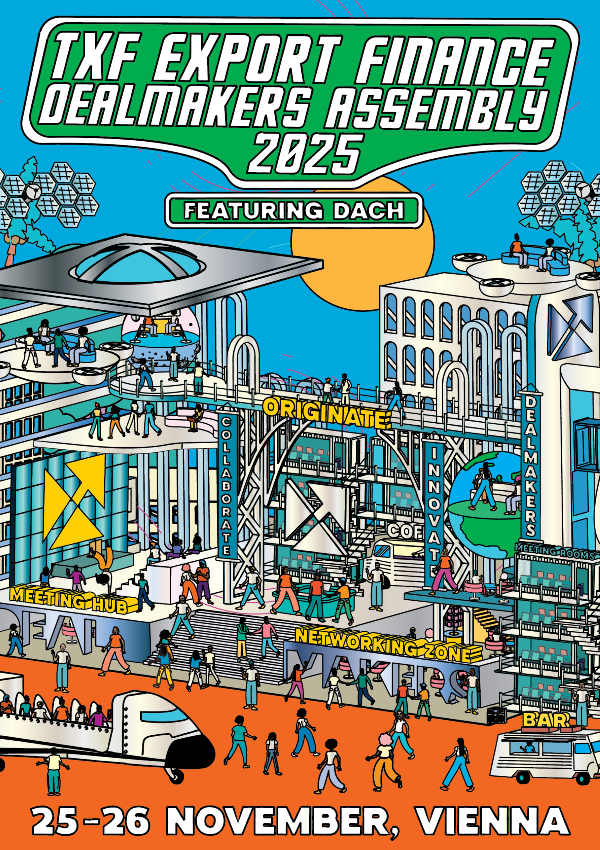Green hydrogen just got more pricing friendly
The impact of the war in Ukraine on gas prices may cut years off the gestation originally predicted for the development of a global green hydrogen market – and with it, green hydrogen project bankability.

Even allowing for the global energy security concerns spawned by Vladimir Putin’s war on Ukraine – concerns that are already proving a far greater political driving force for energy transition than any COP event to date – there have been some extraordinary plans and pricing events this week in the energy space that signal the gestation period for a bankable green hydrogen project market is going to be shorter than anyone would have predicted at end of 2021.
According to estimates from Morgan Stanley the current $150 billion global hydrogen market, of which green hydrogen accounts for less than 1%, is expected to grow to $600 billion by 2050. But with oil and gas prices at record levels, and unlikely to go down any time soon (courtesy of President Putin), the business case for green hydrogen, and hence its bankability, just got a lot stronger. Grey hydrogen produced from unabated fossil gas now has a levelised cost of $6.71/kg in the EMEA compared to $4.84-6.68/kg for green hydrogen, according to a BloombergNEF report (Ukraine War Makes Green Hydrogen Competitive). Similarly, the cost of green hydrogen in China is now down to $3.22/kg (using Chinese electrolysers), compared to $5.28/kg for grey.
In Europe, the hydrogen project pipeline implications of the EUs new energy security plan – REPowerEU – for private sector project borrowers and lenders could become significant very quickly given the timescale proposed. According to the European Commission: “Phasing out our dependence on fossil fuels from Russia can be done well before 2030. To do so, the Commission proposes… diversifying gas supplies, via higher liquefied natural gas (LNG) and pipeline imports from non-Russian suppliers, and larger volumes of biomethane and renewable hydrogen production and imports; and, reducing faster the use of fossil fuels in our homes, buildings, industry, and power system, by boosting energy efficiency, increasing renewables and electrification, and addressing infrastructure bottlenecks.”
REPowerEU ripple effect
While the immediate focus is on the LNG and traditional renewables sectors, the energy security impetus also looks set to have a ripple effect on pace of development in the fledgling hydrogen sector. REPowerEU proposes a ‘Hydrogen Accelerator’ programme to spur an additional 15 million tonnes of renewable hydrogen by 2030 on top of the 5.6 million tonnes already foreseen under its existing hydrogen strategy. That would comprise 10 million tonnes imported from “diverse sources” and an extra five million tonnes made in the EU. The Commission has also pledged to fast-track market reforms to promote development of hydrogen projects and infrastructure such as storage.
Some European national government reactions have been more immediate than just proposals. For example, Germany has announced acceleration of its first LNG terminal projects – German development bank KfW, Gasunie and RWE’s €500 million Brunsbuttel project, and Tree Energy Solutions’ Wilhemlshaven scheme. Permitting for both projects is now being eased, and while both will accommodate LNG, the switch to green hydrogen is also being factored into the schemes from the outset, including hydrogen infrastructure.
The ripple effect on European hydrogen is attracting some unexpected investors from beyond its borders. JBIC, one of the last export credit agencies to retreat from coal-fired power, announced yesterday that it is investing up to €100 million ($108.7 million) in Clean H2 Infra Fund of France. The fund – managed by Hy24, a joint venture between FiveT Hydrogen and Ardian – has a target of €1.5 billion and has already attracted commitments from Air Liquide, TotalEnergies, VINCI Concessions, Plug Power, Baker Hughes, Chart Industries, AXA, CCR, LOTTE Chemicals, Snam, Enagas, GRTgaz, ADP, Ballard, EDF and Schaeffler.
Even in the US – where natural gas prices have only risen 60% over the past year, leaving grey hydrogen as the most competitive ($1.20/kg for grey at current gas prices, compared to $3.32/kg for green hydrogen) – long-term plans for green hydrogen are beginning to proliferate, driven in part by Biden’s $9.5 billion funding set aside to promote regional hydrogen hubs and hydrogen electrolysis research.
Ambitious US project examples include Green Hydrogen International’s Hydrogen City production and storage hub (using the Piedras Pintas Salt Dome) in South Texas. Hydrogen City will be an integrated green hydrogen production, storage, and transport hub growing to 60GW in size and producing over 2.5 billion kilograms of green hydrogen per year. Pipelines will deliver the green hydrogen to Corpus Christi and Brownsville where it will be turned into green ammonia, sustainable aviation fuel and other products, or delivered by pipeline directly to hydrogen power plants and other users around the state. The project will be powered by 60GW of behind the meter solar and wind power with additional renewable energy drawn from the ERCOT grid during periods of low prices. It will be built in phases with the first 2GW phase expected to commence operations in 2026.
The big cost with hydrogen is the amount of electricity required – around 50kWh per kilo – which is why its cost is inevitably tied to that of the renewable generation supplied, a price influenced by different power project capex costs – solar and onshore wind versus offshore wind for example – and the capacity factor (how fully the power the power source’s capacity is used, which with solar and wind means taking into account forces of nature, albeit battery storage technology is beginning to overcome those shortcomings).
The TXF perspective
Given those caveats, and the requirement for highly creditworthy long-term offtakers, the $5-$6.5 billion Helios Green Fuels project in Saudi – sponsored by Neom, ACWA Power and Air Products via their joint venture Neom Green Hydrogen Company – may prove to be the world’s first bankable industrial-scale hydrogen scheme. The project involves integration of 4GW of renewable power from solar, wind and storage; production of 650 tonnes a day of hydrogen by electrolysis using Thyssenkrupp technology; production of nitrogen by air separation, using Air Products technology; and production of 1.2 million tonnes annually of green ammonia using Haldor Topsoe technology.
Lazard, financial adviser to the sponsors, started testing for bank appetite for the project late last year and according to ACWA Power CEO Paddy Padmanathan at the time, around 20% of the scheme will be funded with equity and the remainder with limited recourse debt. If the deal closes in the coming months – and some argue that it will, although to date there has been no announcement on offtake contracts for the ammonia that will be exported from the project by Air Products – the impact on overall bank appetite for the developing sector will likely be limited. The deal will have pathfinder status, but until production gets underway the project is also likely to be viewed by many lenders as one that comes with a fairly unique set of risk characteristics rather than a template for general application across the globe.
However, once built, if the project’s forecast levelised cost of hydrogen – said to be round $2.5 per kg of hydrogen – proves realistic rather than aspirational, the long-term significance of Helios Green could be far-reaching. And arguably, even if reality does not meet aspiration, given the impact of the invasion of Ukraine on gas prices will likely remain long after the war is over, irrespective of the outcome, the odds of the scheme producing very competitively priced green hydrogen compared with grey are considerably higher than they were at end of 2021.
Equity will continue to be the major financial driving force in green hydrogen development, but the path to non-recourse bankability has been shortened by recent geopolitics. Given the corporate credit strength of many of the major international developers that have announced joint ventures for industrial-scale development, hybrid project/corporate borrowings or even ESG-linked corporate debt are both potential alternatives to getting the first projects financed. But the key bankability gauge for green hydrogen project financing – the amount of risk offset by a strong business case – has just edged further into the positive.





